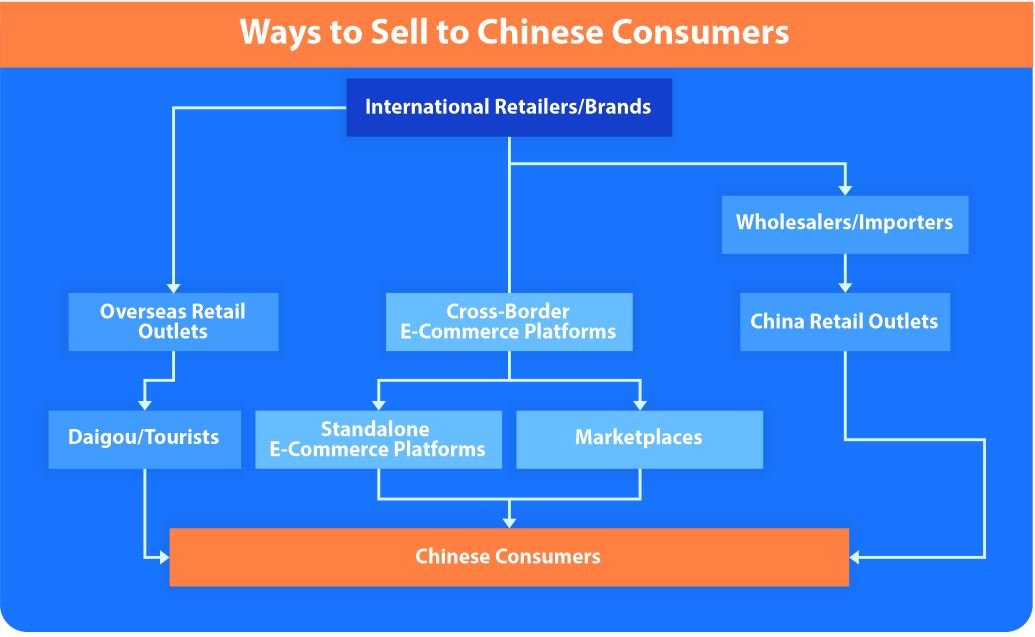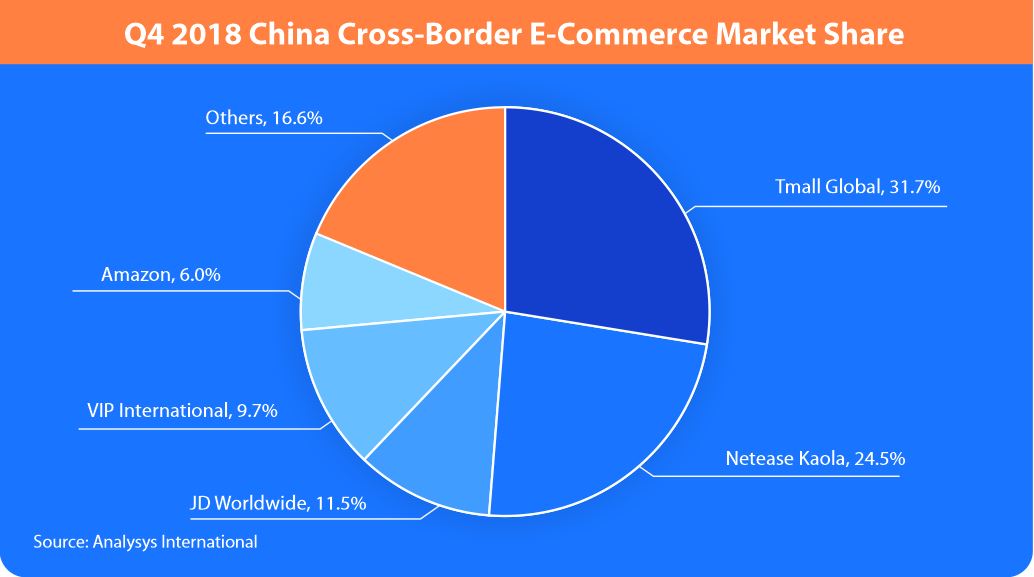An Introduction to Cross-Border E-Commerce
A short primer to cross-border e-commerce and opportunities in the China market
by Ker Zheng
The Opportunity in Cross-Border E-Commerce is Big
Cross-border e-commerce is a new channel that enables international retailers and brands to ship products directly to Chinese consumers, without having to register products or a local Chinese entity. It is estimated to be a $200 billion market by the year 2022.
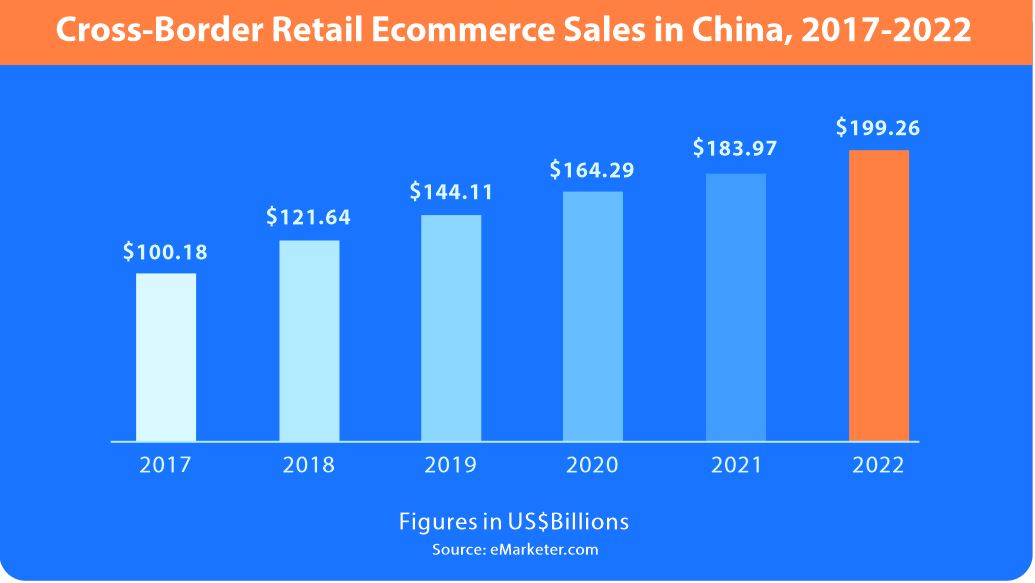
Where Cross-Border E-Commerce Fits In
While in the past many consumers would go to Hong Kong or purchase through gray-market daigou resellers, cross-border e-commerce has emerged as an official channel through which international retail players can directly reach Chinese consumers. It is more asset-light than exporting to China or setting up offline retail stores, but more closer to consumers than selling through daigou or travel retail.
Setting Up Your Own Presence or Selling on Marketplaces?
Retailers can choose either to set up their own e-commerce presence or sell on platforms such as Tmall or JD.com. While marketplaces benefit from large streams of organic user traffic, Chinese people will generally refuse to buy products with no brand awareness. Setting up an official presence on a branded website or WeChat mini-program can help build brand awareness.
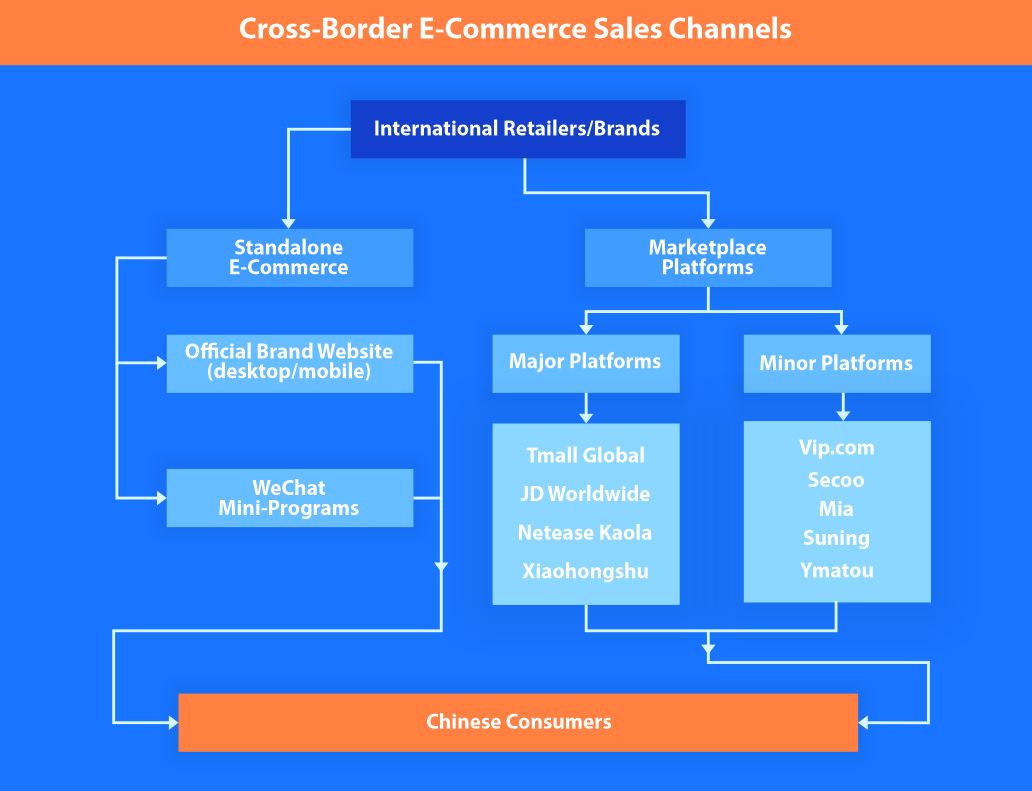
People Are Looking Abroad For Quality Imported Goods
Oftentimes, certain products can't be produced in China or customers doubt their authenticity and quality due to the large number of fake goods scandals. This includes cruelty-free cosmetics, health supplements, organic foods such as nuts, or baby milk powder.
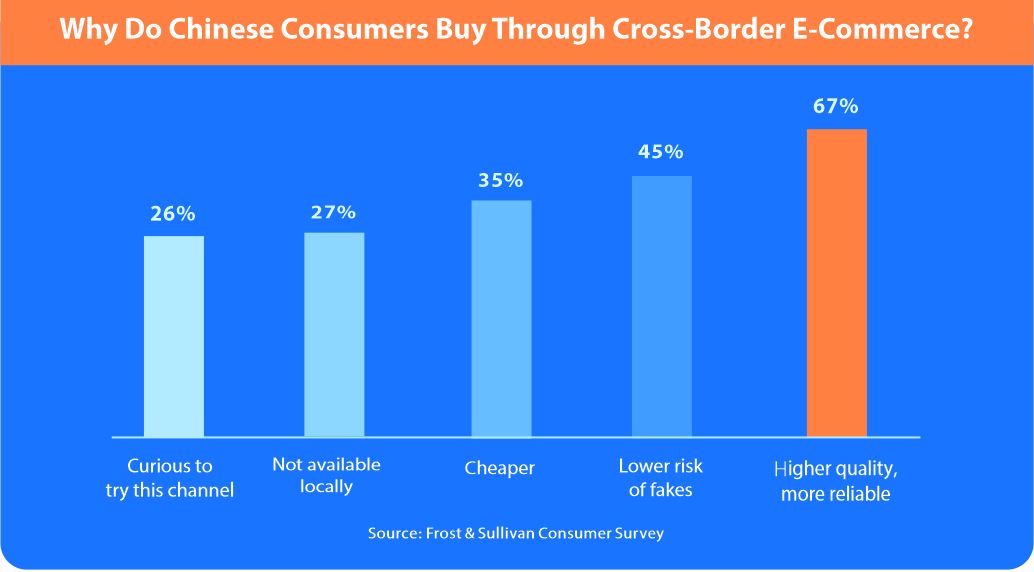
Top Categories in Cross-Border E-Commerce
Do Chinese consumers need your products? Cross-border e-commerce is not for products that can be easily copied and produced in China, such as consumer electronics or gadgets. One should think carefully about whether or not there is strong demand for your products. Checking Taobao, WeChat, or Xiaohongshu to see if anyone is talking about or selling your products is a start.
Key Players in Cross-Border E-Commerce
There are many cross-border e-commerce platforms through which retailers and brands can sell their products. Tmall Global and Netease Kaola are the clear leaders, with JD Worldwide in third place. However, there is room for other third-party retail platforms. In particular, US supplements retailer iHerb and UK cosmetics retailer Feeluniquee have done particularly well in the China market.
